In recent years, the kitchen appliance industry has witnessed a surge in innovation, with contact grills emerging as a favorite among consumers for their convenience and health benefits. This article delves into the evolving market dynamics of contact grills in Europe and the United States, highlighting key players, consumer trends, technological advancements, and the challenges and opportunities that shape this dynamic sector.
Introduction to Contact Grills
Contact grills have become a staple in the world of culinary appliances, offering a convenient and efficient way to achieve that perfect sear on meats and vegetables. These countertop cooking devices are designed to cook food by pressing it between two heating plates, which can be made of various materials such as cast iron, stainless steel, or non-stick coatings. Let’s delve into the basics of contact grills and their popularity across different markets.
At their core, contact grills are all about simplicity and speed. They eliminate the need for flipping food, as the plates press down and evenly cook the ingredients on both sides simultaneously. This not only saves time but also ensures that the food retains its natural juices and flavors. The compact size of contact grills makes them a favorite among those with limited kitchen space, and their versatility allows for a wide range of dishes, from burgers and steaks to vegetables and even sandwiches.
In recent years, the demand for contact grills has surged, particularly in Europe and the United States. The European market has seen a significant growth due to the increasing preference for healthy eating habits and the rise of outdoor cooking culture. People are gravitating towards appliances that can provide a gourmet-quality meal without the need for extensive cooking skills or equipment.
The contact grill’s ability to produce that iconic grill marks on food is a major draw for consumers. These marks are not just aesthetic; they are a sign of flavor and texture that many home chefs strive to achieve. The even distribution of heat on the grill plates ensures that the food is cooked to perfection, with a crispy outer layer and a tender interior.
In the United States, the contact grill market has been bolstered by the growing interest in convenience cooking. Busy lifestyles and the desire for quick yet satisfying meals have led to a surge in demand for appliances that can deliver high-quality results with minimal effort. Additionally, the trend towards healthier eating has made contact grills a go-to choice for those looking to reduce the amount of oil used in cooking.
The design of contact grills has also evolved to cater to these changing consumer preferences. Modern contact grills often come with features like adjustable heat settings, non-stick surfaces, and removable drip trays for easy cleanup. Some models even include digital controls and timers, making them as user-friendly as they are efficient.
One of the standout aspects of contact grills is their versatility. They can be used to cook a wide variety of foods, from the classic grilled burgers and hot dogs to delicate fish fillets and delicate sandwiches. This versatility is particularly appealing to those who enjoy experimenting with different flavors and cooking techniques.
Moreover, contact grills are a favorite among health-conscious consumers. The ability to cook with less oil means that meals prepared on a contact grill are often lower in calories and healthier than those cooked on traditional grills or frying pans. This is a significant factor in the appliance’s growing popularity, especially in regions where health and wellness are top priorities.
Despite their many benefits, contact grills are not without their challenges. One common concern is the risk of burning food if the heat is too high or if the cooking time is not properly managed. However, this can be easily mitigated with careful monitoring and the use of the appliance’s heat controls.
Another challenge is the price point. High-quality contact grills can be an investment, but many consumers find that the convenience and health benefits they offer are worth the cost. The market has also responded to this by offering a range of price points, from budget-friendly models to premium, feature-rich appliances.
In conclusion, contact grills have become a staple in modern kitchens due to their ease of use, versatility, and health benefits. As the demand for quick, convenient, and nutritious meals continues to grow, it’s likely that contact grills will remain a popular choice for home cooks around the world. Whether it’s for a quick weekday dinner or a weekend barbecue, these appliances are sure to continue their rise in popularity as they help us achieve that perfect grill flavor without the hassle.
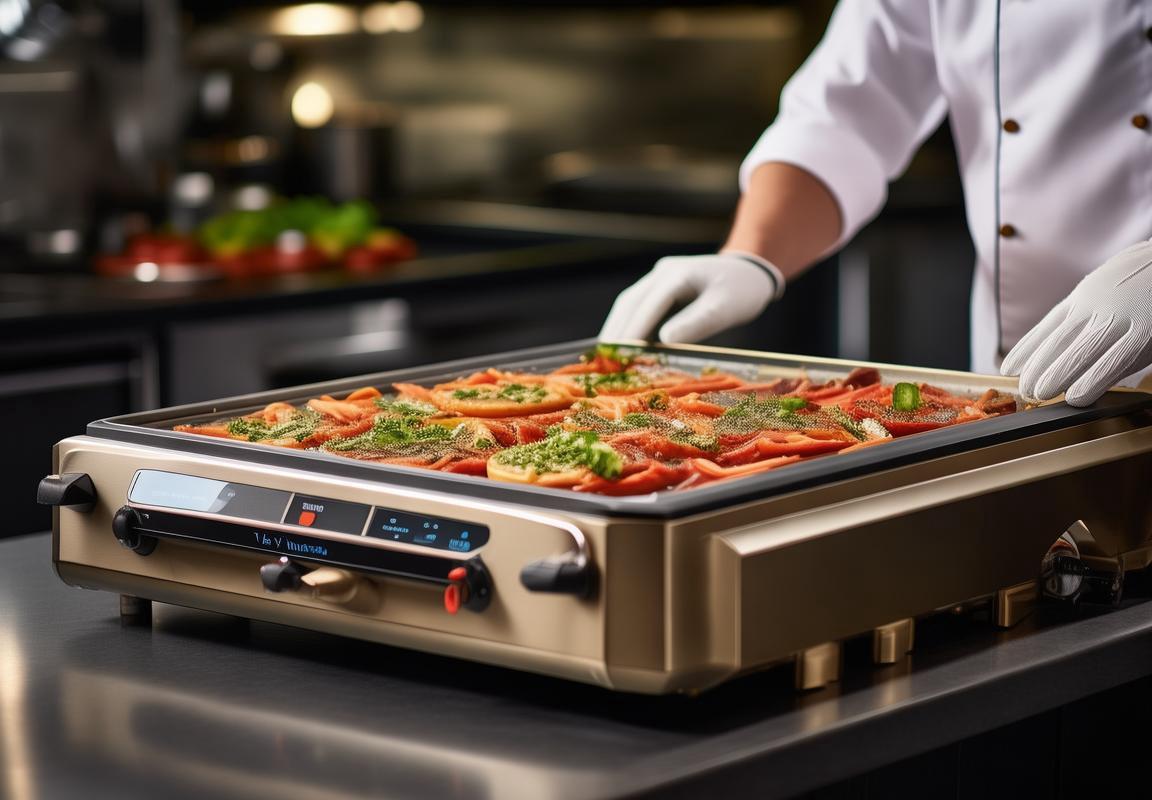
Market Dynamics in Europe
The European contact grill market has been witnessing a significant surge in recent years, driven by the growing demand for healthy and convenient cooking solutions. This dynamic landscape is shaped by several key factors that are propelling the market forward.
-
Health Conscious Consumer BaseEurope has a populace that is increasingly health-conscious, with a preference for low-fat, low-carbohydrate, and high-protein diets. Contact grills offer an excellent option for grilling meats without the addition of excess fats, making them a popular choice among health-aware consumers.
-
Busy Lifestyles and ConvenienceAs urbanization continues to rise, so does the demand for time-saving appliances. Contact grills are compact and easy to use, allowing busy Europeans to prepare delicious meals quickly and efficiently, without the need for constant supervision.
-
Diverse Product OfferingsManufacturers have responded to the market’s demand with a wide range of contact grill models, from basic single-plate grills to multi-functional units with adjustable temperature controls and built-in timers. This diversity caters to different consumer needs and preferences.
-
Innovation in Design and TechnologyInnovations such as non-stick surfaces, removable plates for easy cleaning, and temperature control systems have made contact grills more user-friendly and appealing. These advancements have also helped to extend the product lifecycle and reduce customer churn.
-
Eco-Friendly Cooking TrendsWith growing environmental concerns, there’s a shift towards eco-friendly appliances. Contact grills, which use less energy than traditional grills and cook food more efficiently, align with these green values and are increasingly being favored by environmentally conscious consumers.
-
Cross-Channel DistributionThe market for contact grills in Europe is well-served by a mix of traditional retail channels and online platforms. Online sales have seen a particular boom, thanks to the convenience and variety offered by e-commerce websites, as well as the ease of comparison shopping and reviews.
-
Brand Loyalty and Market SaturationEstablished brands have a strong presence in the market, with loyal customer bases. However, the market is also becoming increasingly saturated, with new entrants vying for a share of the growing pie. This competition has led to aggressive marketing strategies and price wars in some segments.
-
Seasonal FluctuationsThe demand for contact grills in Europe often experiences seasonal fluctuations. Warmer months typically see a spike in sales, as consumers are more inclined to grill outdoors. Conversely, during colder months, indoor cooking becomes more prevalent, which can influence the market dynamics.
-
Export OpportunitiesEuropean manufacturers are also capitalizing on export opportunities, as their high-quality and innovative contact grills are sought after in other regions. This international expansion has opened up new markets and revenue streams.
-
Regulatory ComplianceCompliance with EU safety and environmental regulations is a must for manufacturers. Ensuring that contact grills meet these standards is crucial for market entry and maintaining a positive brand image.
-
Future OutlookLooking ahead, the European contact grill market is expected to continue growing, driven by technological advancements, consumer health trends, and the need for convenience. The market’s future success will depend on manufacturers’ ability to innovate, adapt to changing consumer preferences, and navigate a competitive landscape.
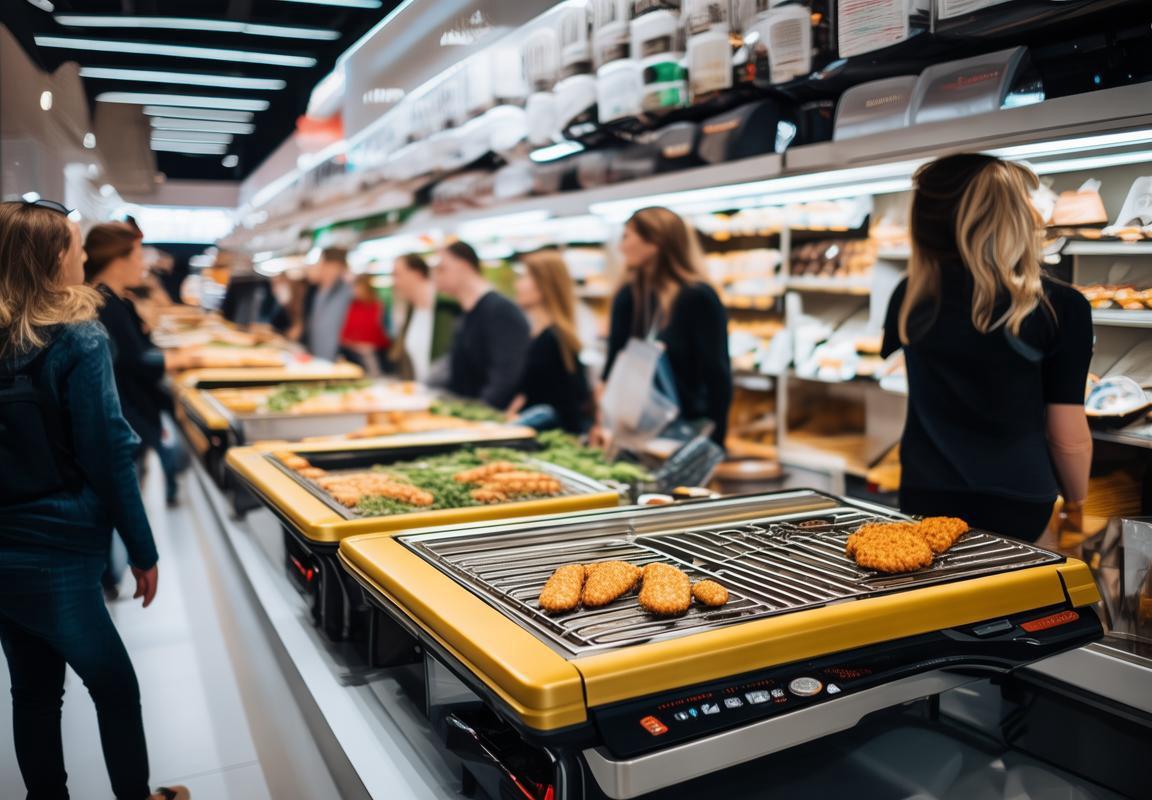
Key Players and Competition
In the bustling European contact grill market, a few key players have emerged as leaders, each bringing their unique touch to the industry. These brands not only compete on product quality but also on innovation, design, and customer service.
One such dominant player is Gaggenau, a German luxury appliance brand known for its high-end kitchen equipment. Their contact grills are a testament to their commitment to precision engineering, offering users a sleek design and exceptional performance. Gaggenau’s grills often feature advanced features like adjustable heat settings and non-stick surfaces, which have helped them carve a niche in the premium segment of the market.
Breville, an Australian company, has also made a significant mark in the European market with its range of contact grills. Known for their sleek and modern designs, Breville’s grills cater to both casual cooks and culinary enthusiasts. The brand’s focus on ease of use and clean-up, along with their innovative features like variable heat control and rapid heat-up times, has garnered a loyal customer base.
Another major player is T-fal, a French brand that has been a household name in kitchen appliances for decades. T-fal’s contact grills are well-regarded for their affordability and durability. The brand offers a variety of models, from budget-friendly options to more sophisticated units with features like removable drip trays and variable temperature settings. T-fal’s success lies in its ability to provide value for money, making high-quality cooking accessible to a wide audience.
In the UK, Morphy Richards has established itself as a go-to brand for contact grills. Known for their reliable and easy-to-use appliances, Morphy Richards offers a range of contact grills that cater to different cooking styles and preferences. Their grills are often equipped with features like variable temperature controls and non-stick surfaces, ensuring a hassle-free cooking experience.
When it comes to competition, these key players are not alone. Smaller, niche brands also contribute to the diversity of the market. For instance, Smeg, known for its retro designs, offers a line of contact grills that appeal to those who value both form and function. Similarly, DeLonghi, another Italian brand, has a reputation for creating durable and efficient kitchen appliances, including contact grills that are both powerful and user-friendly.
The competition is fierce, as these brands often target the same consumer demographics. Gaggenau and Breville, for example, both appeal to those who are willing to invest in premium appliances for their kitchen. They compete on the basis of design, technology, and brand reputation. Meanwhile, T-fal and Morphy Richards often compete on price and accessibility, offering competitive features at a more affordable price point.
One key aspect of competition in the European contact grill market is the emphasis on health and wellness. As consumers become more health-conscious, there’s a growing demand for appliances that can help them prepare healthy meals at home. This has led to an increase in features like non-stick coatings, adjustable temperature controls, and removable parts for easy cleaning, all of which are important selling points for many brands.
The landscape is also shaped by the entry of new players, who bring fresh ideas and technologies to the table. These newcomers often focus on innovation, such as incorporating smart technology or sustainable materials, to differentiate themselves from the established brands. This constant innovation keeps the market dynamic and encourages the existing players to up their game.
In summary, the European contact grill market is characterized by a mix of established brands and emerging players, all vying for market share. The competition is fierce, with brands focusing on different aspects such as design, technology, price, and health-conscious features. This diversity not only benefits consumers but also drives the industry forward, ensuring that the contact grill remains a popular and essential appliance in European kitchens.
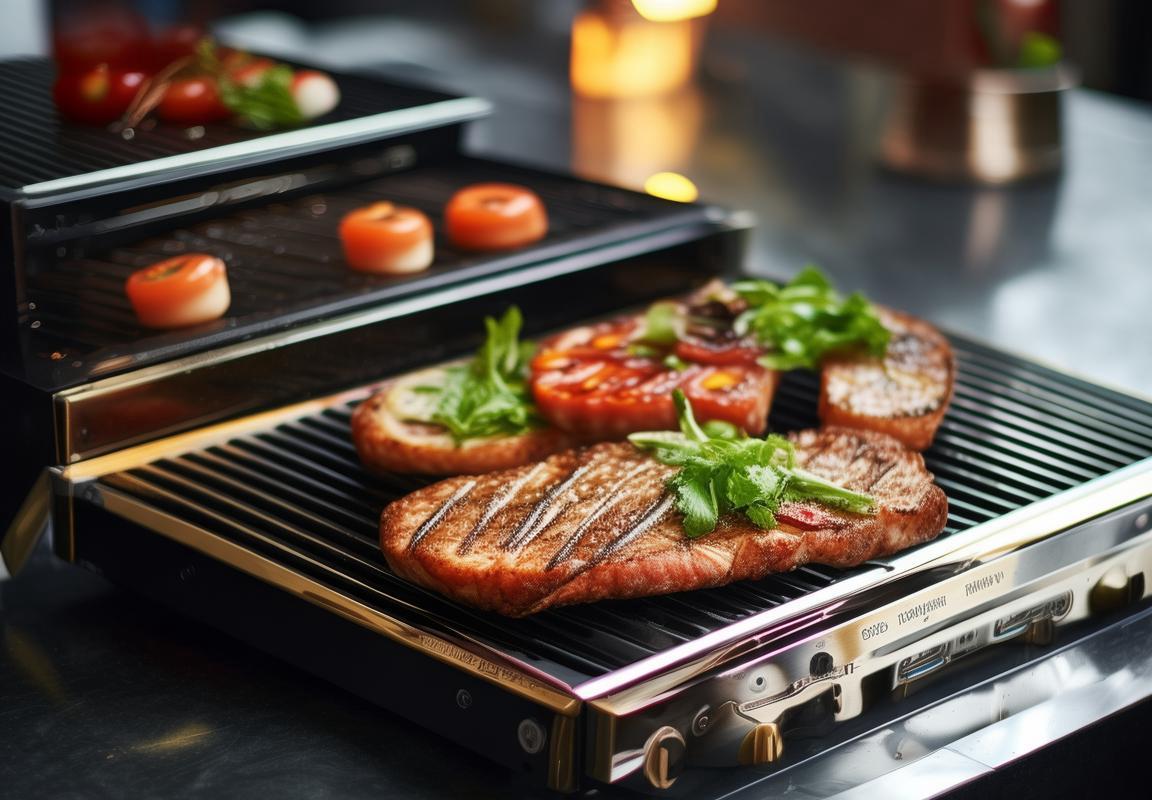
Consumer Trends and Preferences
In the realm of contact grills, consumer trends and preferences have evolved significantly over the years, shaping the market landscape in both Europe and the United States. Here’s a closer look at how these factors are influencing the industry:
Consumers are increasingly seeking convenience in their cooking methods, and contact grills have stepped up to the plate, quite literally. The ease of use and quick cooking times have made these appliances a favorite among busy households. Users appreciate the ability to cook a variety of foods, from vegetables to meats, all on one surface, reducing the need for multiple cooking tools.
Health and wellness have become paramount in modern consumer choices, and contact grills have capitalized on this trend. The ability to cook with less oil compared to traditional grills or frying pans has made these appliances a healthier option. Consumers are drawn to the promise of reduced fat content and the potential for a lighter, more nutritious meal.
The rise of outdoor living spaces and the popularity of backyard barbecues have also influenced consumer preferences. Contact grills offer a compact, space-saving alternative to traditional outdoor grills, making them a convenient choice for those with limited outdoor space or for those who want to enjoy the barbecue experience without the hassle of setting up a large grill.
Design and aesthetics have become more important in kitchen appliances, and contact grills are not immune to this trend. Consumers are looking for appliances that not only perform well but also complement their kitchen decor. Sleek designs, durable materials, and innovative features like adjustable heat settings and non-stick surfaces are becoming increasingly popular.
Smart technology integration is another trend that’s catching on with consumers. The ability to control a contact grill remotely through a smartphone app or to monitor cooking temperatures and times offers convenience and peace of mind. This tech-savvy approach to cooking is appealing to tech enthusiasts and busy professionals alike.
Sustainability is also a growing concern for many consumers. As such, there’s a shift towards appliances that are energy-efficient and made from sustainable materials. Contact grill manufacturers are responding by offering models that consume less energy and are constructed with environmentally friendly components.
In terms of preferences, there’s a noticeable trend towards versatility. Consumers are looking for contact grills that can handle a wide range of cooking techniques, from searing to simmering, all in one appliance. This versatility means that a single contact grill can replace multiple kitchen gadgets, which is both cost-effective and space-saving.
The demand for personalized cooking experiences is also on the rise. Customizable heat settings, temperature control options, and even the ability to adjust the grill’s surface texture are features that are highly sought after. Consumers want to have control over their cooking process, ensuring that their food is cooked to their exact specifications.
In the world of contact grills, there’s a growing interest in eco-friendly cooking. As consumers become more environmentally conscious, they’re gravitating towards appliances that emit less smoke and odors, and that can be easily cleaned to avoid waste. This eco-conscious approach is not only beneficial for the environment but also for the consumer’s health and well-being.
Lastly, the rise of social media and online content has had a profound impact on consumer preferences. Influencers and cooking enthusiasts are constantly experimenting with new recipes and cooking techniques, often showcasing their creations on platforms like Instagram and YouTube. This exposure has sparked interest in contact grills as a versatile and visually appealing cooking tool that can be used to create impressive dishes at home.
These trends and preferences are not only shaping the market for contact grills but are also driving innovation and the development of new features and technologies. As the industry continues to evolve, manufacturers will need to stay attuned to these shifting consumer demands to remain competitive and meet the expectations of today’s kitchen-savvy consumers.
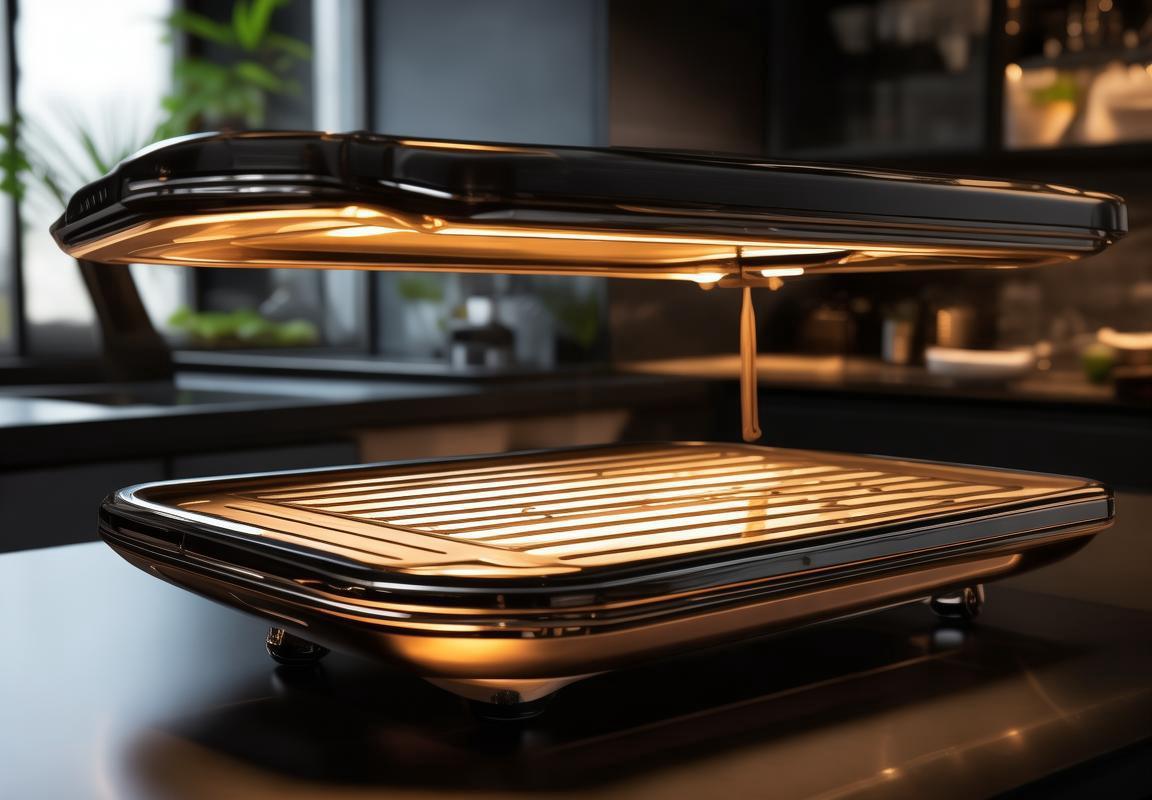
Technological Advancements
In the ever-evolving landscape of kitchen appliances, contact grills have seen a surge in technological advancements that have significantly enhanced their performance, user experience, and environmental impact. Here’s a glimpse into some of the key technological breakthroughs shaping the contact grill market:
-
Smart Cooking SystemsModern contact grills often come equipped with smart cooking systems that allow users to control the grill’s temperature and cooking time through a connected app or digital display. These systems can provide precise temperature control, ensuring that food is cooked to perfection without the risk of burning or undercooking.
-
Non-Stick CoatingsThe development of advanced non-stick coatings has made cleaning contact grills much easier and more efficient. Materials like ceramic or diamond-infused coatings have replaced traditional PTFE (Teflon), offering a safer and more durable surface that requires less oil for cooking, thus promoting healthier eating habits.
-
Energy EfficiencyEnergy efficiency is a growing concern for consumers and manufacturers alike. New contact grills are being designed with energy-saving features, such as faster preheating times and more efficient heat distribution, which not only reduce energy consumption but also decrease cooking times.
-
Multi-FunctionalityContact grills are no longer just for grilling; they have evolved into multi-functional cooking appliances. Many models now offer additional features like searing, flipping, and even baking capabilities. Some advanced models can even act as sandwich makers or waffle irons, expanding their utility in the kitchen.
-
Temperature ControlImproved temperature control is a hallmark of recent technological advancements in contact grills. Users can now set specific temperatures to ensure that different types of food are cooked to their desired level of doneness. Some grills even have temperature sensors that can adjust the heat automatically based on the food being cooked.
-
Smoke ReductionOne of the challenges with grilling is the smoke that can permeate the kitchen and even the food. New contact grills are being developed with smoke reduction technology that uses steam or a sealed design to minimize smoke, allowing for a cleaner cooking environment.
-
Safety FeaturesSafety has always been a priority, and new contact grills come with a range of safety features. These include automatic shut-offs if the grill is left unattended, cool-touch handles to prevent burns, and child safety locks to prevent accidental use by children.
-
Digital Display and InterfaceThe digital interface on contact grills has improved significantly, with clear displays that allow users to easily select cooking modes, temperatures, and timers. Some grills even offer voice control through smart home assistants, making the cooking process more intuitive and hands-free.
-
Healthier Cooking OptionsTechnological advancements have also led to healthier cooking options. Some contact grills now have adjustable cooking plates that can be used at different angles, allowing for the creation of foods with varying levels of crispiness and doneness on different sides.
-
Integration with Smart HomesContact grills are increasingly being integrated into smart home ecosystems. They can be controlled remotely through smartphones or tablets, and some models can be programmed to start cooking before you arrive home, ensuring your food is ready when you need it.
These technological advancements have not only made contact grills more versatile and efficient but have also addressed some of the common concerns associated with traditional grilling methods. As the market continues to grow, we can expect to see even more innovative features that cater to the evolving needs and preferences of consumers.
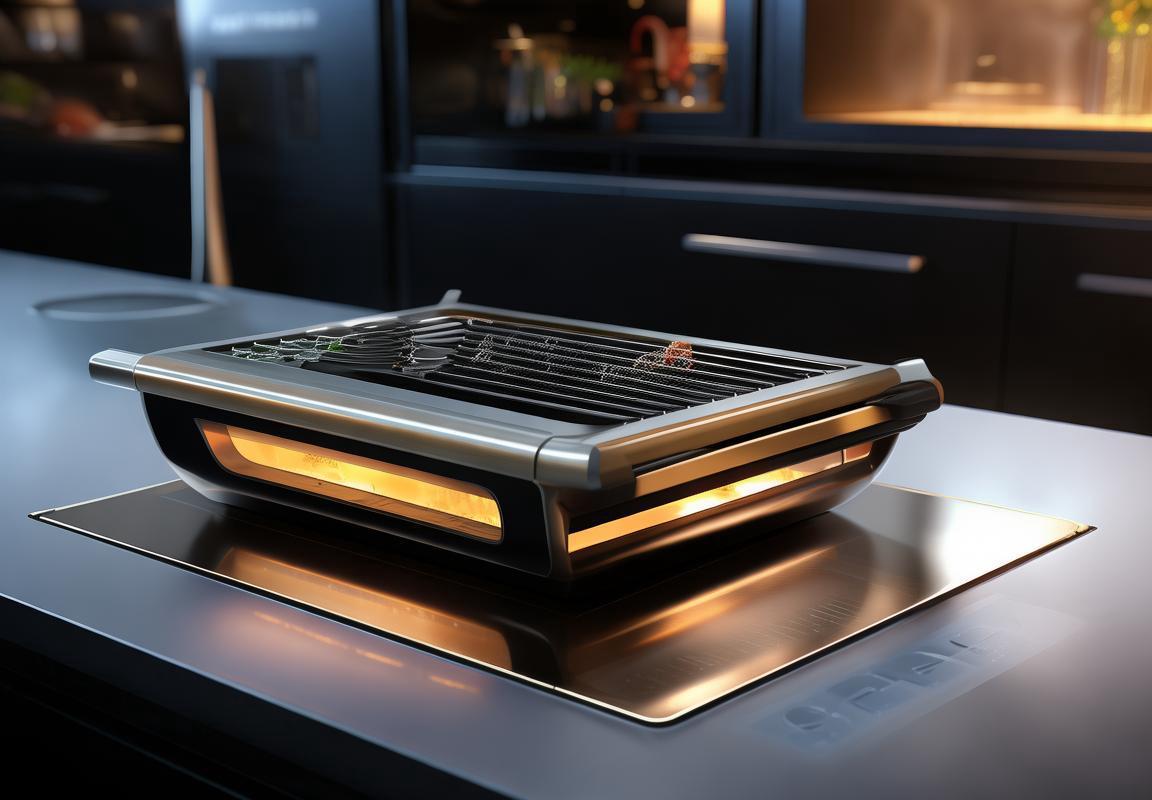
Market Dynamics in the United States
In the United States, the contact grill market has seen a surge in popularity, driven by several factors that have shaped its dynamic landscape.
The U.S. contact grill market has experienced robust growth, fueled by a growing interest in healthy cooking methods. Consumers are increasingly looking for ways to enjoy flavorful meals without the added fats typically found in traditional grilling methods.
The convenience of contact grills has also played a significant role in their market dynamics. These grills offer a compact and efficient cooking solution, perfect for busy lifestyles where time is of the essence. The ease of use and minimal cleanup have made them a favorite among busy professionals and families.
Brands like George Foreman and Hamilton Beach have long been household names in the U.S. contact grill market. Their dominance can be attributed to a combination of brand recognition, product innovation, and a deep understanding of consumer needs. These companies have consistently introduced new features and designs that cater to the evolving preferences of American consumers.
Health consciousness is another key driver in the U.S. market. As consumers become more aware of the nutritional content of their food, contact grills have become a preferred choice for grilling meats, vegetables, and seafood with less added fat. The even distribution of heat provided by contact grills ensures that food is cooked without excess oil, which aligns with the health and wellness trend.
The integration of smart technology into contact grills has also been a game-changer. New models are equipped with features like built-in timers, digital temperature controls, and pre-programmed settings for various types of food. These advancements not only enhance the cooking experience but also make contact grills more appealing to tech-savvy consumers.
Despite the growth, the U.S. contact grill market faces challenges. Competition is fierce, with numerous brands vying for market share. This competition has led to aggressive pricing strategies and frequent promotional activities to attract consumers. Additionally, the entry of new brands and the influence of online marketplaces have expanded the choices available to consumers, making it crucial for established players to differentiate their offerings.
Innovation is a key strategy for success in the U.S. market. Brands are investing in research and development to create contact grills that offer unique features and benefits. This includes advancements in non-stick coatings, improved heating elements for faster cooking times, and even the development of contact grills that can be used as air fryers, catering to the current interest in low-fat cooking methods.
Another important trend in the U.S. market is the focus on sustainability and eco-friendly products. Consumers are increasingly looking for cooking appliances that are energy-efficient and made from sustainable materials. This trend is influencing the design and production processes of contact grills, with manufacturers striving to offer greener alternatives.
The U.S. contact grill market is also seeing a shift towards more diverse product offerings. While traditional flat-top grills remain popular, there is a growing interest in contact grills with variable grids, allowing for different levels of heat and more versatile cooking options. This diversification is responding to the varied preferences of American consumers, who are always on the lookout for the next great cooking gadget.
In conclusion, the U.S. contact grill market is dynamic, driven by a combination of health trends, technological advancements, and consumer demand for convenience and innovation. As the market continues to evolve, manufacturers will need to stay agile and responsive to the changing needs of consumers to maintain their competitive edge.

Key U.S. Players and Competitive Analysis
In the bustling U.S. kitchen appliance market, several key players have carved out their niches, each with their unique strategies and offerings. From established giants to innovative startups, the competition is fierce, and the stakes are high. Here’s a closer look at some of the major players and how they navigate the competitive landscape.
Innovative Startups Shaking Up the Market
Several startups have emerged, leveraging technology and design to offer unique contact grill solutions. These companies often focus on sustainability, ease of use, and smart features. Their fresh approaches have captured the attention of consumers looking for cutting-edge appliances.
Established Brands with Strong Market Presence
Established brands like George Foreman, Breville, and Cuisinart have long dominated the contact grill market. They have built a loyal customer base through consistent quality, reliability, and brand recognition. These companies often invest heavily in marketing and product innovation to maintain their market leadership.
Collaborations and Partnerships
To stay competitive, many players are forming strategic partnerships and collaborations. For instance, appliance manufacturers are teaming up with technology companies to integrate smart features into their contact grills. These alliances aim to create a seamless user experience and tap into the growing smart kitchen trend.
Price and Performance Competitions
The competition in the U.S. contact grill market is often driven by price and performance. Consumers are always on the lookout for the best value for their money. As a result, manufacturers are constantly pushing the boundaries of what their products can do while keeping costs competitive.
Diverse Product Lines
To cater to a wide range of consumer preferences, companies are offering a diverse product line. From compact, countertop grills to large, countertop smokers, the variety is vast. Some brands even offer customizable options, allowing customers to choose specific features and functionalities.
Health and Wellness Focus
With the rise of health and wellness trends, contact grill manufacturers are emphasizing features that promote healthier cooking methods. Non-stick surfaces, adjustable heat settings, and removable cooking plates are just a few examples of how companies are adapting to consumer demands.
Marketing and Branding Strategies
Effective marketing and branding are crucial in the competitive U.S. market. Companies invest in advertising campaigns, influencer partnerships, and social media engagement to build brand awareness and loyalty. They also leverage customer reviews and testimonials to showcase the quality and reliability of their products.
Customer Service and Support
In a crowded market, excellent customer service can be a deciding factor. Top players are investing in robust customer support systems, including detailed user manuals, troubleshooting guides, and responsive customer service teams. This focus on customer satisfaction helps maintain a positive brand image and fosters repeat business.
E-commerce and Direct-to-Consumer Sales
The rise of e-commerce has opened new avenues for contact grill manufacturers. Many are now selling directly to consumers online, bypassing traditional retail channels. This direct-to-consumer approach allows for more personalized marketing and a better understanding of customer needs.
Global Expansion and Diversification
Some U.S. contact grill manufacturers are looking beyond domestic markets, seeking growth opportunities internationally. They are adapting their products to meet the specific needs and preferences of different regions, expanding their global footprint and diversifying their revenue streams.
In the ever-evolving U.S. contact grill market, the competition is intense, and the strategies employed by key players are as diverse as the products they offer. From innovative startups to established giants, the market is a testament to the power of innovation, customer focus, and strategic partnerships in driving success.

Consumer Behavior in the U.S
In the United States, consumer behavior when it comes to kitchen appliances, particularly contact grills, is shaped by a blend of culinary trends, technological advancements, and lifestyle choices. Here’s an exploration of the nuances of consumer behavior in the U.S. market:
Consumer preference for convenience and efficiency is paramount. Many American households seek appliances that simplify meal preparation, and contact grills fit this bill perfectly. They offer a quick and easy way to cook food with minimal cleanup, appealing to busy professionals and families alike.
Health and wellness have become significant drivers in consumer choices. As more individuals prioritize their dietary health, they are gravitating towards appliances that can offer healthier cooking options, such as contact grills that use less oil than traditional grills. The ability to cook a variety of foods, from lean proteins to vegetables, on a contact grill has made them a favorite among health-conscious consumers.
Brand loyalty plays a substantial role in the market. Established brands with a reputation for quality and innovation tend to attract more customers. Consumers often look for reviews and recommendations from friends and family before making a purchase, which can create a strong following for well-known brands.
Smart features are increasingly important. The integration of technology into kitchen appliances is on the rise, and contact grills are no exception. Features like digital temperature control, non-stick surfaces, and programmable settings are becoming must-haves for many consumers. These advancements not only enhance the cooking experience but also cater to the desire for control and precision in food preparation.
Portability and versatility are attractive to many U.S. consumers. With the trend of outdoor living and grilling becoming more popular year-round, there’s a growing demand for appliances that can be easily moved and used in various settings. Contact grills that are lightweight and compact have a distinct advantage in this market segment.
The influence of online shopping cannot be overstated. With the convenience of shopping from home, many consumers turn to online retailers for their contact grill purchases. Online reviews, detailed product descriptions, and competitive pricing are key factors that influence these decisions.
Cultural trends also play a role in shaping consumer preferences. The American culinary scene is diverse, and contact grills allow for the creation of a wide range of dishes, from classic American BBQ to international cuisine. This adaptability caters to a multicultural population that enjoys exploring different flavors and cooking techniques.
The popularity of cooking shows and social media influencers has had a significant impact on consumer behavior. These platforms often showcase the latest kitchen gadgets and cooking trends, which can lead to a surge in demand for specific appliances. When a celebrity chef or influencer endorses a contact grill, it can elevate its status in the market.
Finally, price sensitivity remains a factor. While high-end features can drive sales, many consumers are still price-conscious and look for value for money. The existence of a wide price range in the contact grill market allows for a broad appeal, catering to different budgets and purchasing power.
In summary, the U.S. consumer market for contact grills is dynamic and multifaceted, influenced by a combination of convenience, health, technology, and cultural trends. Understanding these factors is crucial for manufacturers and retailers looking to succeed in this competitive landscape.
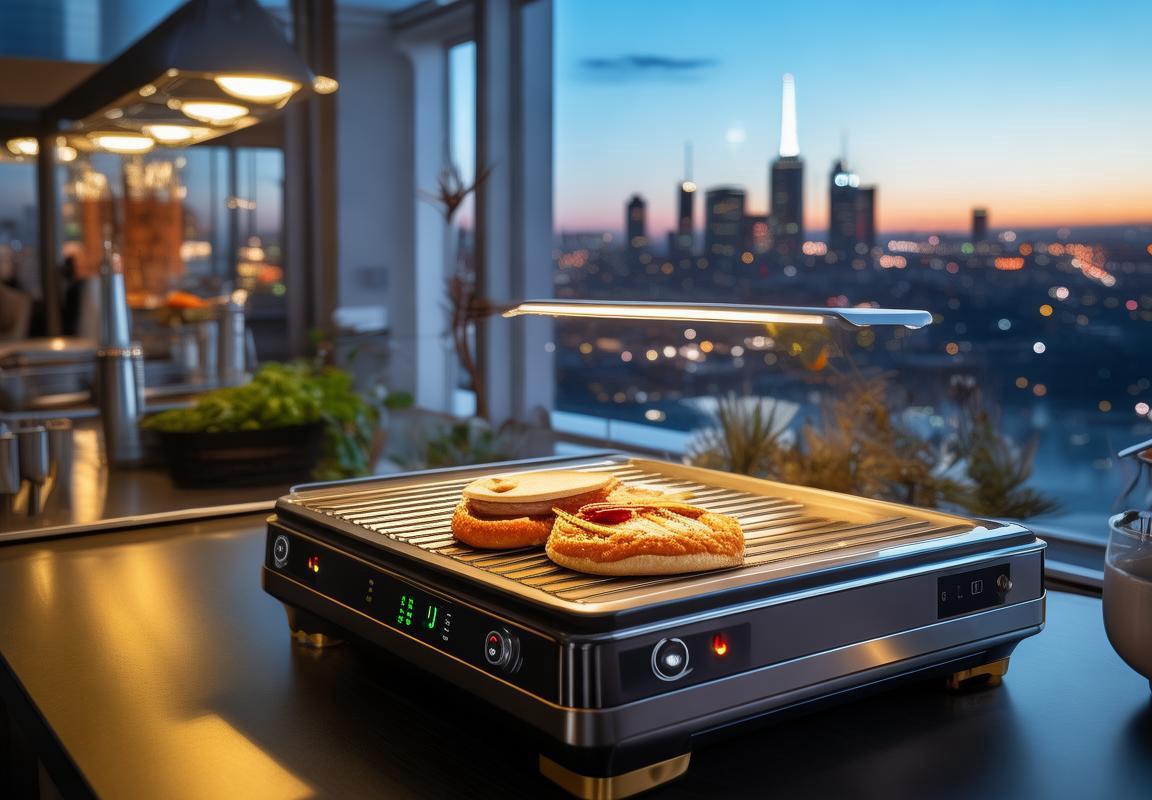
Distribution Channels and Retail Dynamics
In the bustling retail landscape, distribution channels and retail dynamics play a pivotal role in shaping the market for contact grills. Understanding these elements is crucial for manufacturers and retailers alike, as they navigate the complexities of bringing innovative cooking appliances to consumers.
Retailers are the gatekeepers, deciding where and how contact grills are showcased. Supermarkets and department stores have long been staple outlets, offering a broad range of products and catering to a diverse customer base. However, the rise of specialty kitchen appliance stores has provided a more focused shopping experience for consumers seeking high-quality grills.
Online retail has seen exponential growth, driven by the convenience and variety it offers. E-commerce platforms have become a go-to destination for consumers looking to compare models, read reviews, and make informed purchases. The ease of returning products and the ability to browse at any time of day have made online shopping increasingly popular.
Social media and influencer partnerships have also become key players in the retail dynamic. Influencers can sway consumer opinions with their endorsements, creating a buzz around new contact grill models. This digital marketing strategy has bridged the gap between traditional retail and the online shopping experience, allowing brands to reach a wider audience.
The distribution of contact grills has evolved to keep pace with consumer preferences. Direct-to-consumer (DTC) models have gained traction, allowing manufacturers to establish a direct relationship with customers. This approach can lead to higher profit margins and more control over the customer experience, from pre-purchase inquiries to after-sales service.
Wholesale distribution remains a significant channel, particularly for retailers that require large quantities of inventory. Distributors play a crucial role in ensuring that contact grills are available in various retail locations, often providing additional services such as marketing support and training for sales staff.
Retail dynamics are also influenced by the emergence of new retail formats. Pop-up stores, for instance, offer a temporary, immersive shopping experience that can generate significant interest in new products. These temporary locations can be used to launch new contact grill models or to create a buzz around a specific brand or product feature.
The importance of sustainability and eco-friendly practices cannot be overstated. Retailers that prioritize these values often offer eco-friendly packaging and encourage recycling initiatives. Consumers who are conscious of their environmental footprint are more likely to choose brands that align with their values.
The rise of subscription-based services has also impacted the distribution landscape. Some retailers are now offering contact grill rentals or subscription boxes that include the grill along with accessories and recipes. This model caters to consumers who may not be ready to make a significant investment but still want to enjoy the benefits of contact grilling.
Lastly, the integration of technology into the retail experience has been transformative. Smart shelves, interactive displays, and augmented reality (AR) applications allow consumers to visualize how a contact grill might fit into their kitchen and even simulate cooking experiences. This technology-driven retail environment not only enhances the shopping experience but also provides valuable data for manufacturers and retailers to refine their offerings and marketing strategies.
In summary, the distribution channels and retail dynamics for contact grills are diverse and multifaceted. From traditional brick-and-mortar stores to the latest digital platforms, the market is constantly adapting to meet consumer demands and preferences. As such, staying abreast of these trends and leveraging innovative retail strategies is essential for success in the contact grill industry.

Challenges and Opportunities
In the rapidly evolving landscape of the contact grill market, challenges and opportunities coexist, shaping the future trajectory of the industry. Here’s a closer look at the key factors at play:
The rise of health-conscious consumers has presented contact grill manufacturers with a golden opportunity. As people seek healthier alternatives to traditional cooking methods, contact grills offer a solution that promises reduced fat and calorie content without sacrificing flavor. This shift in consumer preference has opened up new markets and product lines for companies to explore.
Environmental concerns are also influencing the market. With a growing awareness of the impact of food preparation on the environment, contact grills that are energy-efficient and made from sustainable materials are becoming more attractive. Companies that can align their products with these eco-friendly values stand to gain a competitive edge.
However, the increasing competition has made it challenging for manufacturers to stand out. The entry of new players, along with the expansion of established brands into different regions, has led to a saturated market. This competition has forced companies to innovate not just in product design but also in marketing and customer service.
Regulatory changes can pose both challenges and opportunities. New safety standards and labeling requirements can be costly for manufacturers to comply with, but they also create opportunities for those who can adapt quickly. For instance, transparent labeling that highlights the health benefits and sustainability of contact grills can attract consumers who are increasingly aware of these issues.
The rise of e-commerce has transformed the distribution landscape. Online sales have become a significant channel for contact grill manufacturers, allowing them to reach customers directly and reduce their reliance on traditional retail partnerships. This shift has enabled brands to offer competitive pricing and a wider variety of products, but it also requires a robust digital presence and efficient logistics.
The integration of technology into the cooking experience is another opportunity. Smart contact grills with built-in sensors and apps that provide cooking instructions and recipes are becoming increasingly popular. This not only enhances the convenience for consumers but also allows manufacturers to gather valuable data that can inform product development and marketing strategies.
On the challenge side, the current economic climate can be unpredictable. Fluctuations in the economy can affect consumer spending habits, potentially leading to a decrease in demand for high-priced appliances like contact grills. Manufacturers must be prepared to adjust their pricing and marketing strategies to remain competitive during economic downturns.
Lastly, the global supply chain disruptions have highlighted the vulnerability of the contact grill market. Raw material shortages and shipping delays can impact production timelines and increase costs. Companies that can diversify their supply chains and maintain strong relationships with suppliers are better positioned to navigate these challenges.
In summary, while the contact grill market faces a range of challenges, such as fierce competition, regulatory changes, and economic uncertainties, it also presents numerous opportunities. By focusing on health and sustainability, leveraging technology, and adapting to changing consumer behaviors and market dynamics, manufacturers can position themselves for long-term success. The key to thriving in this landscape lies in innovation, strategic planning, and the ability to pivot quickly in response to market shifts.
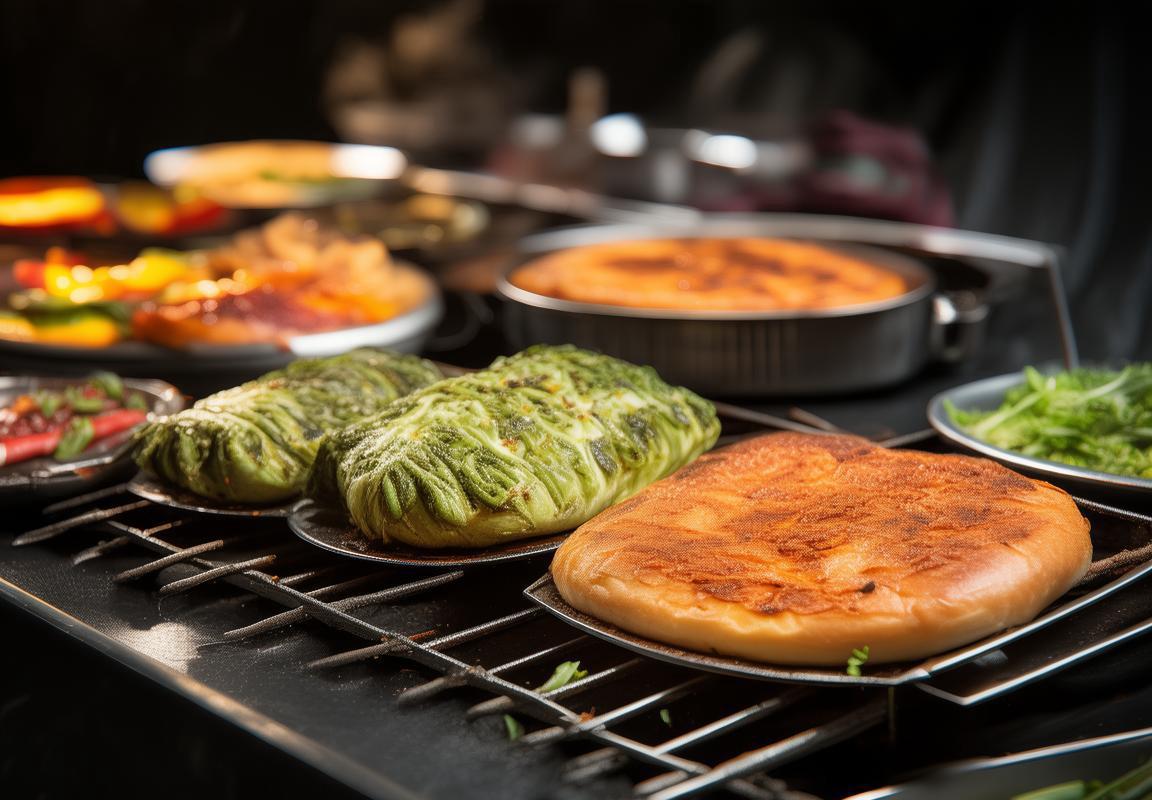
Conclusion
In reflecting on the intricate tapestry of the contact grill market, it’s clear that while challenges persist, the opportunities for growth and innovation are abundant. The industry has witnessed a surge in demand driven by consumer preferences that favor convenience, health, and technological sophistication. Here’s a closer look at the multifaceted landscape of challenges and opportunities:
The rise of health-conscious consumers has pushed manufacturers to innovate, offering grills that reduce smoke and fat, making them more appealing for those seeking healthier cooking options. However, this also presents a challenge, as companies must balance health benefits with the taste and texture that consumers expect.
The integration of smart technology in contact grills has been a game-changer, allowing for precise temperature control and customization. This has opened up new markets for tech-savvy consumers, but it also requires continuous investment in research and development to stay ahead of the curve.
Sustainability is another key area where the contact grill market is evolving. As consumers become more environmentally aware, there’s a growing demand for eco-friendly materials and manufacturing processes. This presents an opportunity for companies to differentiate themselves and appeal to a broader customer base, but it also means navigating complex supply chains and regulatory landscapes.
E-commerce has reshaped the retail landscape, offering contact grill manufacturers new ways to reach customers. Online sales have surged, and while this has expanded market reach, it’s also increased competition. Companies must now adapt their marketing strategies to appeal to a digital-savvy audience, balancing the online experience with the tactile satisfaction of in-store shopping.
The global pandemic has accelerated the shift towards home cooking, with many consumers investing in kitchen appliances like contact grills. This surge in demand has brought with it the challenge of supply chain disruptions and fluctuating raw material prices. Despite these hurdles, the opportunity remains to cater to the new wave of home chefs who are looking for high-quality, versatile cooking tools.
Innovation in cooking techniques and recipes has also become a focal point. Contact grill manufacturers are exploring new ways to use their products, from grilling vegetables to creating gourmet sandwiches. This trend opens up a world of possibilities for product development but requires a deep understanding of culinary trends and consumer preferences.
The rise of social media influencers and food bloggers has had a significant impact on the contact grill market. Consumers are increasingly influenced by online reviews and demonstrations, which means companies must invest in content marketing and influencer partnerships to maintain visibility and credibility.
The challenge of maintaining product quality and consistency across different regions is a significant hurdle. Companies must ensure that their products meet the diverse needs and preferences of consumers worldwide, which can be difficult given the varying cultural tastes and cooking habits.
Lastly, the opportunity to expand into new markets, particularly in emerging economies, is substantial. As these regions grow and consumer purchasing power increases, there’s a chance to tap into a new demographic that values convenience and innovation in kitchen appliances.
In conclusion, the contact grill market is a dynamic and evolving space with a blend of challenges and opportunities. By focusing on health, technology, sustainability, and consumer behavior, manufacturers can navigate the complexities and capitalize on the potential for growth. The key lies in staying adaptable, innovative, and responsive to the ever-changing demands of the market.